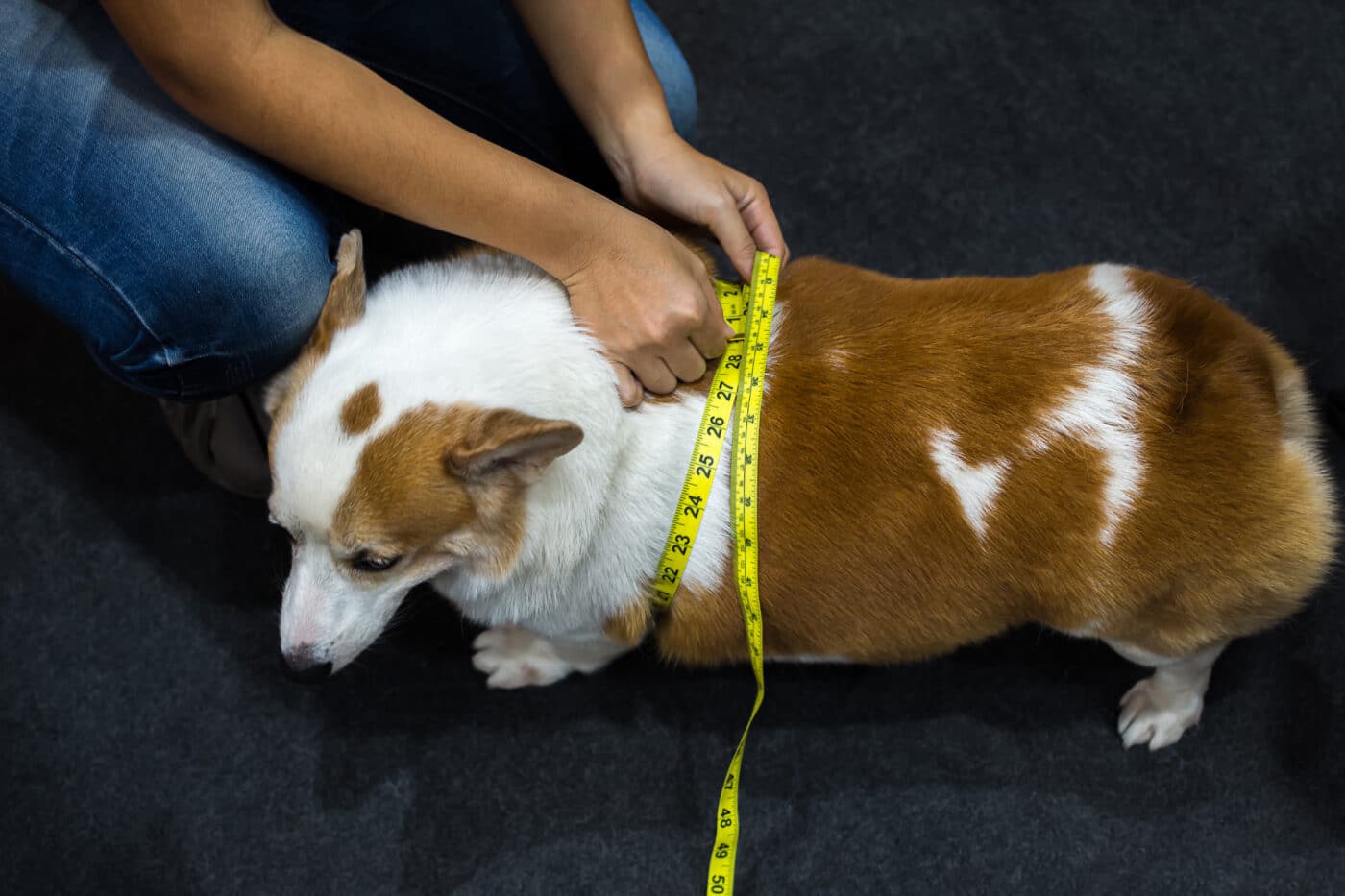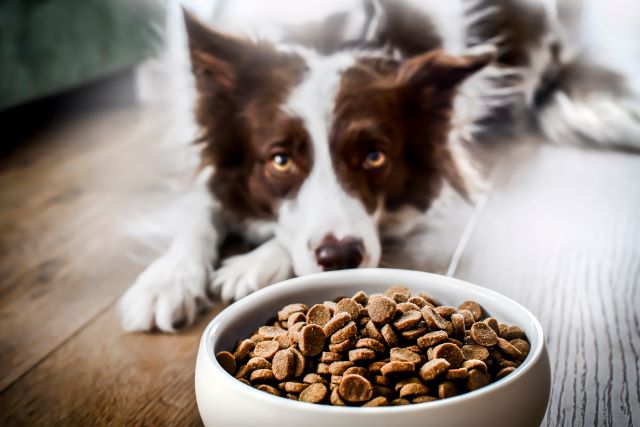Shutterstock
Choosing the right food for your dog is one of the most important decisions you can make as a pet parent. A healthy diet is crucial for your dog’s overall well-being, affecting their energy levels, coat condition, and even their mood. However, feeding your dog the wrong food can lead to numerous health issues that may not be immediately noticeable. Identifying signs that your dog’s food may not be right for them is the first step in making necessary adjustments to ensure they lead a happy, healthy life.
Unexplained Weight Gain or Loss
 Shutterstock
Shutterstock
One of the clearest signs that your dog may not be on the right diet is unexplained weight changes. If your dog starts gaining weight despite regular exercise or losing weight without any changes to their routine, it could indicate that the food you’re providing is not suitable. Weight gain might be caused by an overly rich or high-calorie diet, while weight loss can be a result of nutrient deficiencies or poor-quality ingredients in the food. Either way, these changes suggest it’s time to reassess what’s in your dog’s bowl and whether it meets their specific nutritional needs.
Dull or Lackluster Coat
 Shutterstock
Shutterstock
Your dog’s coat is a good indicator of their overall health. If your dog’s once shiny, healthy fur has become dull, dry, or even flaky, it may be a sign that their food isn’t providing the necessary nutrients for optimal coat health. A lack of essential fatty acids, proteins, and vitamins in their diet can result in poor coat quality. Consider switching to a food with a balance of omega-3 and omega-6 fatty acids, which are known to help maintain a healthy, glossy coat.
Digestive Issues
 Shutterstock
Shutterstock
Frequent digestive issues, such as diarrhea, constipation, or vomiting, could be a sign that the food you’re feeding your dog isn’t agreeing with them. Low-quality ingredients, artificial preservatives, or fillers in dog food can lead to an upset stomach or poor digestion. Dogs may also develop sensitivities or allergies to certain proteins, grains, or additives in their food. If your dog regularly experiences these issues, it may be worth evaluating their diet and switching to a higher-quality food that suits their digestive system.
Lack of Energy
 Shutterstock
Shutterstock
A healthy dog should have a moderate to high energy level depending on their age and breed. If your dog is suddenly lethargic, seems disinterested in playtime, or spends most of the day resting, the problem could lie in their food. A lack of essential nutrients, such as high-quality protein or complex carbohydrates, can cause a dog to feel sluggish. Switching to a food with better quality ingredients may help restore their energy levels and spark their enthusiasm for daily activities.
Increased Shedding
 Shutterstock
Shutterstock
Excessive shedding is another sign that your dog may not be getting the right nutrition. While some shedding is natural, sudden or excessive hair loss can indicate that their diet is lacking in certain nutrients. Foods deficient in vitamins, minerals, or omega fatty acids can result in thinning fur, and increased shedding might follow. Opting for a dog food with better ingredients that promote coat health and skin elasticity may help reduce shedding and improve the overall condition of your dog’s fur.
Persistent Itching or Allergies
 Shutterstock
Shutterstock
If your dog is constantly scratching or has irritated skin, it could be a sign of a food allergy or sensitivity. Many commercial dog foods contain allergens such as corn, wheat, soy, or certain proteins that can cause itching, hot spots, and other skin irritations. Additionally, foods lacking in essential fatty acids and antioxidants can contribute to poor skin health. Switching to a hypoallergenic or limited-ingredient diet might help alleviate these symptoms, giving your dog relief from constant itching and discomfort.
Bad Breath
 Shutterstock
Shutterstock
Bad breath is common in dogs, but if it becomes persistent and overpowering, it could be an indicator that something is wrong with their diet. Poor-quality food can lead to an imbalance in the gut, resulting in bad breath or even more severe dental issues like gum disease. A diet high in fillers or artificial additives can also contribute to poor oral health. If you notice your dog’s breath has become unpleasant or unusually strong, it may be worth reevaluating their food and choosing a brand that promotes better oral hygiene and digestive health.
Unusual Drinking Habits
 Shutterstock
Shutterstock
If your dog is suddenly drinking much more or much less than usual, this could signal a dietary issue. Increased thirst may be due to a high-sodium food, which can cause dehydration, while reduced thirst could indicate that their food is not providing enough moisture or that they’re developing kidney issues. A high-quality diet will not only meet their nutritional needs but will also help maintain healthy hydration levels. Monitoring your dog’s water intake is a simple way to determine if their diet is impacting their hydration.
Difficulty in Maintaining a Healthy Weight
 Shutterstock
Shutterstock
Maintaining a healthy weight is essential for your dog’s overall health, and feeding them the wrong food can make it difficult. If your dog is consistently underweight or overweight despite your best efforts to manage portion sizes and exercise, their diet may not be balanced. Some foods may contain too many fillers or empty calories that contribute to weight gain, while others may lack the necessary nutrients to maintain a healthy body weight. Consider switching to a diet specifically formulated for weight management or consult a vet to determine the best food for their needs.
Behavioral Changes
 Shutterstock
Shutterstock
Dogs are creatures of habit, and a change in their behavior could be a red flag indicating an issue with their food. If your dog becomes more irritable, anxious, or hyperactive, it could be a sign that their diet is affecting their mood or cognitive function. High levels of sugar, artificial additives, or certain preservatives can affect a dog’s behavior, just like they can impact humans. If you’ve noticed an unusual behavioral shift, it’s worth investigating whether their food could be playing a role in their mood or energy fluctuations.
Poor Immune Function
 Shutterstock
Shutterstock
A dog’s diet plays a vital role in supporting their immune system. If your dog is frequently sick, suffers from recurring infections, or seems to catch every bug that’s going around, their food might not be providing enough support for a healthy immune system. Look for foods rich in antioxidants, vitamins, and minerals that promote overall health and immune function. A high-quality, nutrient-dense food can help boost your dog’s defenses, reducing the likelihood of frequent illness or infection.
Trouble with Joint Health
 Shutterstock
Shutterstock
Dogs that are fed the wrong food may also develop joint issues over time. A diet low in essential fatty acids, glucosamine, and chondroitin can contribute to inflammation and joint pain. If you notice that your dog is having trouble getting up, limping, or moving around, their food might not be supporting joint health. Switching to a food with added joint-supporting ingredients can help reduce discomfort and maintain your dog’s mobility as they age.
Refusal to Eat
 Shutterstock
Shutterstock
If your dog suddenly refuses to eat, this could be a sign that something isn’t right with their food. Dogs may stop eating if they dislike the taste or smell of their food, or if the food is causing them discomfort. A sudden refusal to eat may also indicate an underlying health problem. If this issue persists, it may be worth trying a new food or consulting with a vet to rule out any other potential causes.
 Shutterstock
Shutterstock
Changes in your dog’s stool quality, such as excessive diarrhea, constipation, or unusually foul-smelling feces, could indicate that their food isn’t agreeing with them. Low-quality food, or food with too many fillers and artificial additives, can lead to digestive problems and poor stool consistency. Switching to a more easily digestible food with higher-quality ingredients can improve digestion and ensure your dog’s stool remains healthy and consistent.
Excessive Gas or Flatulence
 Shutterstock
Shutterstock
Excessive gas can be both uncomfortable for your dog and unpleasant for you. If your dog is frequently passing gas, it may be a sign that their food is difficult to digest or contains ingredients that are causing digestive upset. Low-quality foods with fillers like corn, soy, and wheat can be harder for dogs to digest and can lead to excessive gas. If your dog’s gas is becoming problematic, consider switching to a high-quality food with easily digestible ingredients to reduce flatulence and improve overall digestion.
The Doggy Diet Disaster
 Shutterstock
Shutterstock
If you’re noticing any of these signs, it’s time to reassess your dog’s diet and make some adjustments. Dogs need the right balance of nutrients to maintain their health and happiness, and feeding them the wrong food can lead to a variety of physical and emotional issues. It’s essential to provide your dog with the proper food that suits their specific needs. Remember, your dog relies on you to choose the best diet for their health—don’t let them down by feeding them something that isn’t up to par!





